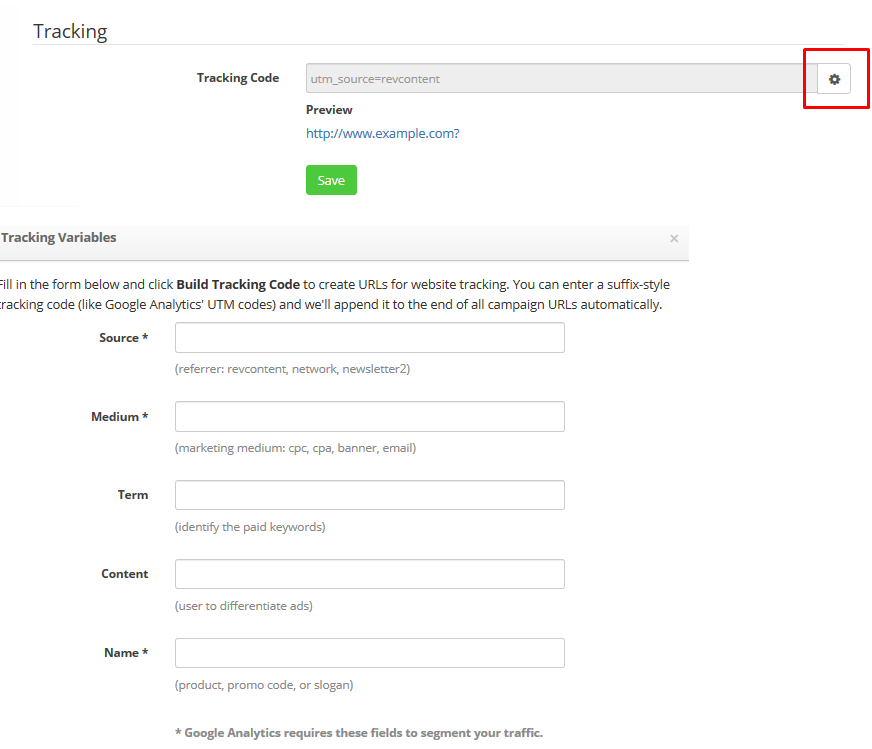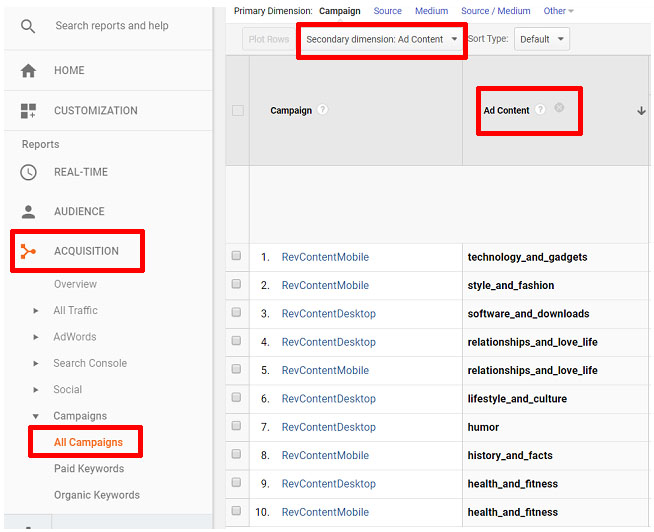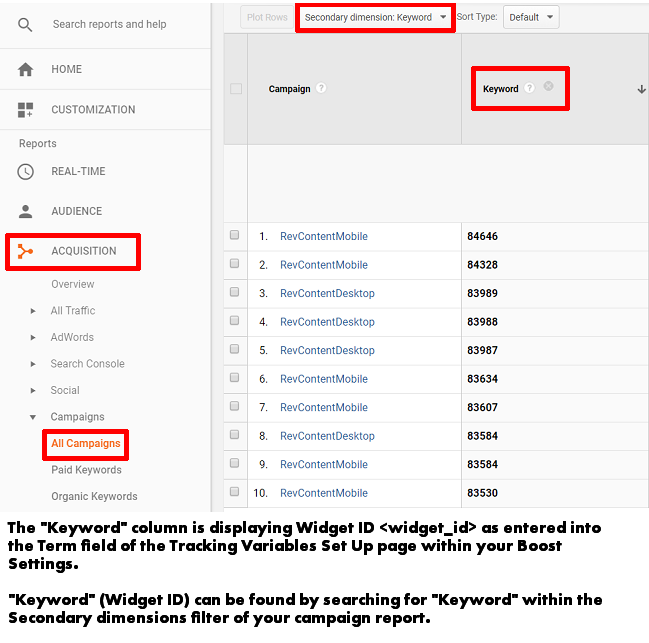Guide for Advertisers Using Google Analytics
Setting up GA with Revcontent
Tracking with Google Analytics
In order for your Revcontent boosts to accurately pass back click data to your Google Analytics, GA requires that source, medium and name are all included in your campaigns’ tracking codes. If any of these are missing, click passback will not come through accurately. Revcontent has made setting this up easy for you by including a form where these fields can be added along with optional term and content fields. You can find this form within your boost settings under Tracking Code.

Suggested Tracking Variables:
Source: revcontent
Medium: native
Term: {adv_targets}
Content: {content_id}
Name: {boost_id}
It is important to note that GA is case sensitive (must use lowercase letters) and cannot recognize misspellings or non-html encoded custom values. For this reason, it is imperative that utm_source is consistent among all campaigns. Using Revcontent, revcontent, RevContent, etc. will cause tracking discrepancies between the two platforms.
In addition to the standard Google fields, Revcontent allows advertisers to pass back custom variables including content id, boost id, widget id and topic name.
Custom variables settings:
Keep in mind both { } and < > work for variable tracking, but we recommend { } and you must enter in lowercase and ensure all spelling is correct.
{widget_id} - unique numerical identifier (subID) of ad placement where click came from
{content_id} - numerical identifier of content within a Revcontent Boost (campaign)
{boost_id} - numerical identifier of Revcontent Boost
{adv_targets} - identifies the Topic where click came from.
If you wish to utilize these custom variables, you will need to define custom dimensions within your Google Analytics. For your convenience, we have included a step-by-step guide for you here.
Setting Up Google Analytics with Standard Google Analytics Settings
If you are not using custom dimensions for your Google Analytics setup, you can use the below steps to include Widget ID and Topic or Brand Name as a dynamic parameter.
- utm_content: {adv_targets}
- We recommend using {adv_targets} in the Content field of your Tracking Variables Setup page. Google Analytics will pass back the name of the Topic being targeted by the selected Campaign Boost. If used as Content UTM, you can find this information by searching for “Ad Content” under the Secondary dimension filter for your All Campaigns subtab of the Acquisition report. Please see an example screenshot of reporting displayed within Google Analytics below:

The Ad Content Column is displaying "Boost Targets" (Topic) {adv_targets} as entered into the content field of the Tracking Variables Set Up page within your Boost Settings.
- utm_term: {widget_id}
- We recommend using {widget_id} in the Term field of your Tracking Variables Setup page. Google Analytics will pass back the numerical identifier of the Widget being targeted by the selected Campaign Boost. If used as Term UTM, you can find this information by searching for “Keyword” under the Secondary dimension filter for your All Campaigns subtab of the Acquisition report. Please see an example screenshot of reporting displayed within Google Analytics below:

Setting Up Custom Variables for Google Analytics
Step 1: Set up Custom Dimensions in the Google Analytics UI
- Sign into GA
- Select the Admin Tab
- In the PROPERTY column, click “Custom Definitions” and then click “Custom Dimensions”
- Click + NEW CUSTOM DIMENSION
- Add Name: utm_content_id
- Click Save, and then Done
- Click + NEW CUSTOM DIMENSION
- Add Name: utm_boost_id
- Click Save, and then Done
- Click + NEW CUSTOM DIMENSION
- Add Name: utm_widget_id
- Click Save, and then Done
- Click + NEW CUSTOM DIMENSION
- Add Name: utm_targeting
- Click Save, and then Done
Now that you have added these custom dimensions, they will appear as secondary filter options within the Campaign sections of Google Analytics.
Step 2: Customize Google Analytics Tracking Code to Record Content ID, Boost ID, Widget ID, and Channel Name Passbacks
Add the following php code to your header:
Add the following to your Google Analytics tracking code directly before the </script>:
